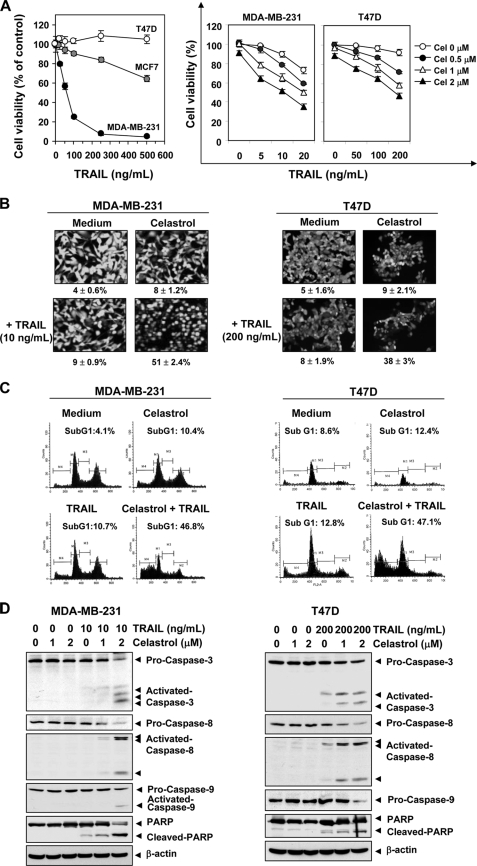FIGURE 1.
Celastrol sensitizes breast cancer cell to TRAIL. A, left, cells (3000 cells/well) were incubated various concentrations of TRAIL. After 24 h, cell viability was determined by the MTT assay. Right, cells were pretreated with celastrol for 6 h, washed with PBS to remove celastrol, and then were exposed to the indicated concentrations of soluble TRAIL for 24 h. The cell viability was determined by the MTT assay. Points, mean percentage relative to control-treated cells (n = 5); bars, standard deviation. B, MDA-MB-231 and T74D cells were treated with 2 μmol/liter celastrol for 6 h and washed with PBS to remove celastrol. Then cells were treated with the indicated concentration of TRAIL for 24 h. Apoptosis was determined by the Live/Dead Assay. C, cells were exposed to 2 μmol/liter celastrol for 6 h, and then the celastrol was removed. Then cells were treated with TRAIL (10 ng/ml) for 24 h. Cells were stained with PI, and the sub-G1 fraction was analyzed using flow cytometry. D, cells were pretreated with celastrol for 6 h and washed out. Then cells were treated with TRAIL for 24 h. Whole cell extracts were prepared and analyzed by Western blotting using antibodies against caspase-3, caspase-8, caspase-9, and PARP.

